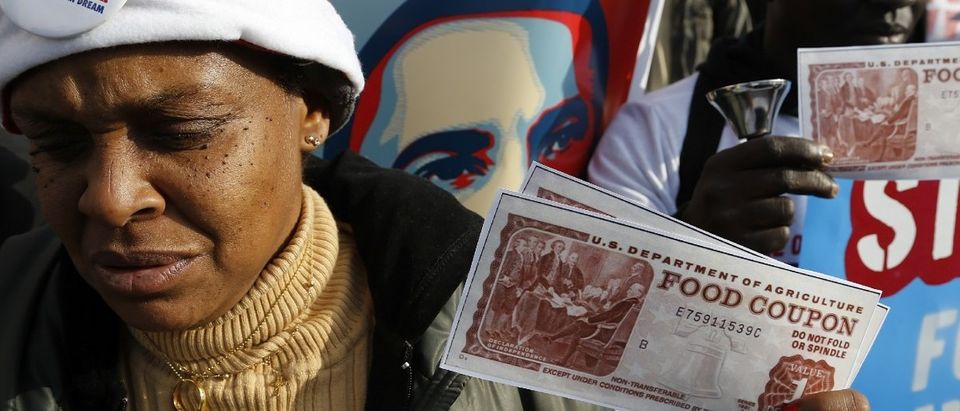Households with an illegal immigrant are more likely to receive food stamps compared to an otherwise identical family with no illegals, according to a report Monday.
The Center for Immigration Studies found the issue stems from how the food stamp system categorizes eligible households. Households cannot routinely qualify for benefits if a member has a high enough income. Illegal immigrants usually don’t report their income, meaning the household they are living with might appear as though they are making less than they actually are.
“Food stamps is a program for people of limited income, so there are income limits that go with family sizes,” the report detailed. “Families including an employed ineligible alien can secure food stamps when an all-citizen family of the same size and with the same income would be denied the benefits.”
The U.S. Department of Agriculture (USDA) is the main federal agency that administers the national food stamp program. It works with state agencies to make sure benefits are properly distributed to qualified individuals and families. The department at one time had a way to stop the issue but no longer publishes it as a suggestion to state agencies.
“In a 2011 USDA publication there is a reference to an option available to states to impose the concept of gross income levels in SNAP cases, thus eliminating the benefit break we have been describing,” the report continued. “But there are no references to such an option in more recent SNAP publications.”
Households eligibility is determined based on the amount of qualified individuals and the total income level. A larger household for instance has can have a higher total income compared to an individual before being cutoff. An illegal immigrant is not counted as an eligible individual but neither is his income.
The food stamp program is the largest nutritional assistance welfare service in the country. The USDA estimates the program has increased from 17 million participants in 2000 to nearly 47 million in 2014. It has declined by more than 1.5 million recipients since participation hit its peak in 2012 thanks in part to the improved economy, the Congressional Budget Office found.
All content created by the Daily Caller News Foundation, an independent and nonpartisan newswire service, is available without charge to any legitimate news publisher that can provide a large audience. All republished articles must include our logo, our reporter’s byline and their DCNF affiliation. For any questions about our guidelines or partnering with us, please contact licensing@dailycallernewsfoundation.org.


